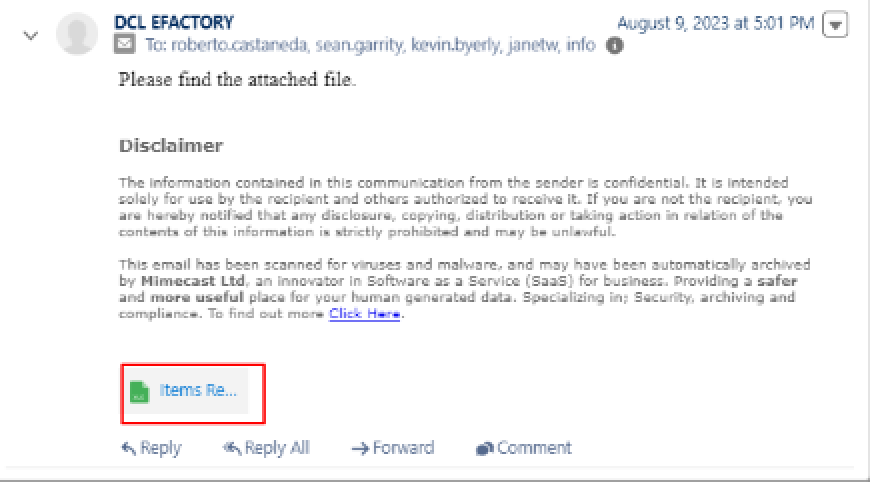Handling DCL Return to Sender CasesUpdated a year ago
Overview: This article provides guidance on identifying and handling cases related to items returned to DCL (Distributed Commerce Logistics) through notification emails from [email protected]. These cases typically involve orders that were returned to sender (RTS) and require follow-up actions such as reshipping or refunding the orders to customers.
Identification of Cases:
To identify these cases, follow these steps:
- The email will originate from [email protected].
- Subject: Items Returns
- Description: Look for an attached Excel file containing order details.

Handling Procedure:
Step 1: Open the Excel File
- Download the Excel file and review its contents to identify IFs listed.
Step 2: Review Excel Contents
- Check for IF numbers under Column A to identify RTS orders.

- Important columns to review:
- Column A: IF number (RTS order number)
- Column C: Issued Date (original shipment date)
- Column F: Item # (SKU of returned items)
- Column I: Q Received (quantity received at warehouse)
- Column J: Inv Receipt (date received at warehouse)
- Column L: Condition upon return (typically undamaged)
Step 3: Provide Follow-Up for Each IF
- For each IF identified:
- Determine customer interaction status:
- Customer case already resolved:
- Leave a note stating "IF-XXXX from Excel list has been assisted in case XXXXXX. Replacement/Refund requested per customer preference. Closing case."
- Customer case pending resolution:
- Take ownership, add a note confirming receipt ("DCL confirm the reception of IF-XXXX being RTS in case [add DCL case]").
- Proceed based on customer preference:
- Reshipment: Follow "Add Replacement Item" and "Create Fulfillment Orders - Manual" procedures.
- Refund: Use "Discount Flow" or request in GGA_Staff Slack channel if applicable.
- Customer has not reached out:
- Create a case, contact customer via email to confirm RTS status, and inquire about preference (replacement or refund).
- Leave a note indicating waiting for customer response ("IF-XXXX from Excel list is being assisted in case XXXXXX. Waiting for customer’s response. Closing case once received.").
- Customer case already resolved:
- Determine customer interaction status:
Step 4: Case Disposition
- After addressing IFs and leaving necessary notes:
- Disposition: Order Support
- Disposition Reason: Order Status
- Resolution: No Action Required
- Close the case accurately to finalize.
This procedure ensures efficient handling of returned items, maintaining customer satisfaction through prompt resolution of RTS orders.